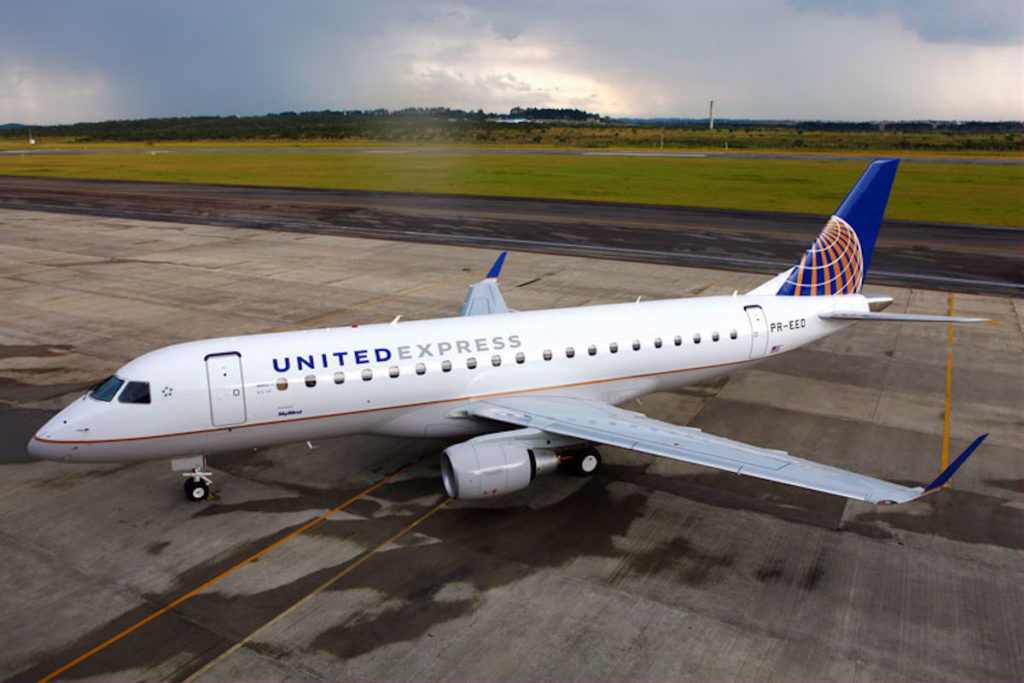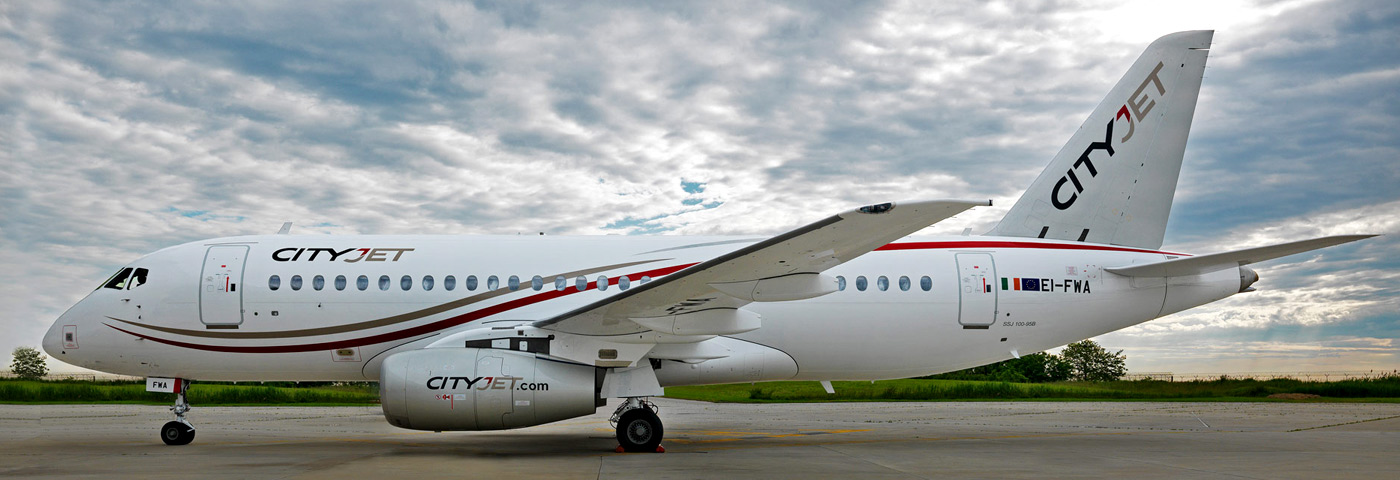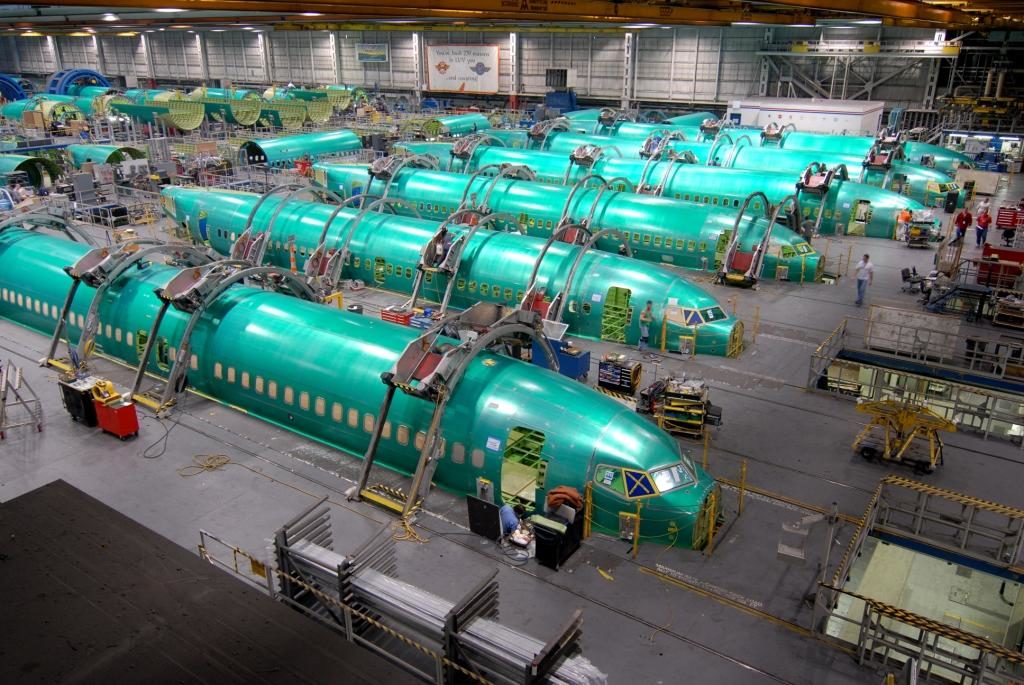Leeham News and Analysis
There's more to real news than a news release.
 Leeham News and Analysis
Leeham News and Analysis
- Bjorn’s Corner: New engine development. Part 4. Propulsive efficiency April 19, 2024
- Boeing unlikely to meet FAA’s 90-day deadline for new safety program April 18, 2024
- Focus on quality not slowing innovation, says GKN April 18, 2024
- Boeing defends 787, 777 against whistleblower charges April 17, 2024
- Dissecting Boeing CEO’s statement next new airplane will cost $50bn April 15, 2024
A view around the Paris Air Show
 June 17, 2017, (c) Leeham Co.: It’s surprising that many hall and chalet exhibits are still in a state of construction as LNC walked around the Paris Air Show Saturday, but we’ve noted this before.
June 17, 2017, (c) Leeham Co.: It’s surprising that many hall and chalet exhibits are still in a state of construction as LNC walked around the Paris Air Show Saturday, but we’ve noted this before.
Meanwhile, here are a few photos:
Posted on June 17, 2017 by Scott Hamilton
Paris Air Show Preview
Subscription Required
Introduction
May 22, 2017, © Leeham Co. The Paris Air Show begins June 17, and few in the industry expect much in the way of orders this year.
The order cycle is on the downward side of the bell curve. Sustaining the 2,000, 3,000 or nearly 4,000 gross orders announced 2011-2013 simply couldn’t be achieved. The “order bubble” had to break, and it did. Last year, Airbus and Boeing reported some 1,400 orders between them.
 Airbus guides that it will tough to achieve a 1:1 book:bill this year. Boeing is running about 1:1 book:bill so far but it also guides conservatively. Still, LNC thinks Boeing might surprise this year–and some of this could be at the Paris Air Show.
Airbus guides that it will tough to achieve a 1:1 book:bill this year. Boeing is running about 1:1 book:bill so far but it also guides conservatively. Still, LNC thinks Boeing might surprise this year–and some of this could be at the Paris Air Show.
Leeham Co.’s new publication, Commercial Aviation Report, provides a Focus Report on the Air Show. This encompasses the expectations for Airbus, Boeing, Bombardier, Embraer, COMAC, Irkut, Mitsubishi, CFM, GE Aviation, Pratt & Whitney and Rolls-Royce into one easy-to-read package.
The pre-airshow press briefings by the OEMs begin next week. We don’t expect any earth-shattering news from these and we wanted to get our views out ahead of these briefings.
Summary
- Boeing wants to launch the 737-10 MAX at the Paris Air Show. This could spur a group of orders that would give Boeing a rare win in the headlines vs Airbus on the latter’s home ground.
- Mitsubishi plans to have its MRJ90 at the Air Show. One airplane entered the paint shop for ANA colors–this might be the one making the appearance.
- Embraer expects to have its KC-390 there. Will the E195-E2 also make an appearance?
Posted on May 22, 2017 by Scott Hamilton
Regional aircraft for US Scope clause operations. Part 2.
By Bjorn Fehrm
Subscription Required
Introduction
May 11, 2017, © Leeham Co.: In the first article about the US regional aircraft market, we described the special rules that apply for outsourced regional airlines, operating for a mainline carrier. The mainline pilots limit the outsourcing via Scope clauses in their Union agreements to aircraft with 76 seats and 86,000lb Maximum Take-Off Weight (MTOW).
We identified potential aircraft that fit these restrictions in the first article. Now we examine their load carrying capability.
 The MTOW limit sets a hard limit on how large aircraft can be used to house 76 seats. The mainline carriers want the regionals to mimic their domestic cabin classes in their aircraft. There shall be no disruption for a First class or Premium economy passenger whether on a mainline flight or on a feed flight to/from the hub.
The MTOW limit sets a hard limit on how large aircraft can be used to house 76 seats. The mainline carriers want the regionals to mimic their domestic cabin classes in their aircraft. There shall be no disruption for a First class or Premium economy passenger whether on a mainline flight or on a feed flight to/from the hub.
The challenge is to accommodate the seating standard in the aircraft that come in question.
Summary:
- Mainline airlines want to replicate their three class cabins for all sectors of a network.
- This means the regional aircraft cabins shall offer First class, Premium economy and Economy sections.
- Only the larger aircraft we study can offer a three class cabin with 76 seats.
Read more
Posted on May 11, 2017 by Bjorn Fehrm
Regional aircraft for US Scope clause operations
By Bjorn Fehrm
Subscription Required
Introduction
May 4, 2017, © Leeham Co.: The US regional aircraft market changed shape last year. Most players expected that the negotiations between mainline pilots and the airlines would allow larger and heavier aircraft going forward.
But no, the present limits of 76 passengers and a Max Take-Off Weight (MTOW) of 86,000lb remained. Next negotiation round will be 2019 (United Airlines) and 2020 (American and Delta Airlines). By now, most observers expect the present limits to stay beyond 2020.
The non-moving limits surprised manufacturers. They expected their new aircraft could fit under new rules, allowing heavier aircraft.
With the changed situation, we go through which aircraft fit the present rules and which does not. And what are the options, should the rules not change come 2020.
Summary:
- The present scope clause-compliant aircraft are the CRJ700 and CRJ900 from Bombardier and E175-E1 from Embraer.
- These aircraft will be joined by the new MRJ70 from Mitsubishi Aircraft Corporation at the turn of the decade. The MRJ90 will arrive as well, but is too heavy for Scope-restricted airlines.
- We use our performance model to dive into how these aircraft operate under present and future Scope clause rules.
Read more
Posted on May 4, 2017 by Bjorn Fehrm
Spirit AeroSystems, the world’s largest aerostructures company
A feature report.
By Bjorn Fehrm
March 15, 2017, ©. Leeham Co: Spirit AeroSystems is the world’s largest aerostructures supplier, with main facilities in Wichita (KS). I visited Wichita early March and was given a guided tour of the factories. It was a tour of contrasts.
In production hall two, the Boeing 737 fuselages are riveted together in much the same way as the Boeing B-29 Stratofortress was produced there during World War II. “Rosie the riveter” is replaced with a robot, but the hall still has a busy charm.
In another hall, the production is silent. The winding of the Boeing Dreamliner’s forward fuselage from rolls of tape is made with a swooshing sound. There are few people around; the machines rule. Everything is mega large; tape-layers, tools, autoclaves, the lot. Read more
Posted on March 15, 2017 by Bjorn Fehrm
New Airbus-Japan venture aims for new aircraft
 March 14, 2017, © Leeham Co.: A new partnership, still in the Memorandum of Cooperation stage, between France and Japan aims to expand a relationship that could lead to joint development of advanced aircraft for Airbus.
March 14, 2017, © Leeham Co.: A new partnership, still in the Memorandum of Cooperation stage, between France and Japan aims to expand a relationship that could lead to joint development of advanced aircraft for Airbus.
The MOC was signed between the Ministry of Economy, Trade, and Industry of Japan (METI) and the Directorate General for Civil Aviation of the Ministry of Ecology, Sustainable Development and Energy (MEDDE) of the French Republic.
“An Airbus-Japan Ad Hoc Civil Aeronautical Industry Working Group will be established, and it will meet on a regular basis to discuss technology fields that could be considered for cooperation between Airbus and Japan such as material, aircraft system and equipment, or manufacturing technologies for the development of future Airbus aircraft,” Airbus said in a March 1 press statement announcing the MOC.
Airbus sales historically trailed Boeing badly in Japan, although the current backlog leans slightly in the European OEM’s favor: 87 to 74.
Posted on March 14, 2017 by Scott Hamilton
Boeing Services expansion wise, necessary move
Subscription Required
Introduction
March 6, 2017, © Leeham Co.: Boeing CEO Dennis Muilenburg wants the company to participate in the aftermarket aircraft services business and set a goal of $50bn in revenue in the coming years.
He looks at Boeing’s current business, the former Boeing Commercial Aviation Services (CAS), and sees a single-digit market share in a worldwide trillion-dollar market potential. Muilenburg understandably wants a greater share of this.
But LNC believes there is an additional driver: the intensely competitive commercial airliner business faces even greater competition in the coming years. Prices are under pressure today. China is developing its own aerospace industry, which will eat into sales by Boeing (and Airbus) in the home market. Russia has ambitions to renew its home-market airliner industry.
Boeing’s new Global Services unit is a hedge against the prospect of falling profits at Boeing Commercial Airplanes as these factors converge.
Summary
- Airbus, Boeing single-aisle prices under pressure.
- A330/350 keeps 787 pricing down.
- Boeing’s NMA business case may depend on after-delivery services contracts.
Posted on March 6, 2017 by Scott Hamilton
Assessing the SSJ100 future
Subscription Required
Introduction
Feb. 20, 2017, © Leeham Co.: Sukhoi is Russia’s attempt at reentering the commercial airliner business. The SSJ100 regional jet is, by most accounts, an attractive

SSJ100 in CityJet colors. CityJet is one of two Western operators for the Russian-made airplane. Photo: Superjet International.
and efficient aircraft.
But it’s hampered by erratic production and questionable product support (largely due to the overhang of the Putin politics).
The aircraft was grounded briefly in December when a fatigue issue was found in the tail section during a routine inspection.
Summary
- Nearly 100 SSJ100s are in service.
- Two key Western customers.
- Small customers base.
- Captive Russian customers.
Posted on February 20, 2017 by Scott Hamilton
Bombardier, China, CSeries, Embraer, Mitsubishi, Premium, Sukhoi
Bombardier, C929, China, CRJ900, CS100, E175 E2, E175-E1, E190 E2, E190-E1, Embraer, Mitsubishi, MRJ70. MRJ90, SSJ100, SSJ130, Sukhoi
Bad weather slows MRJ90 flight testing
Feb. 14, 2017, © Leeham Co.: When Mitsubishi announced that it would conduct nearly all the flight testing for its new MRJ90 in Moses Lake in Eastern Washington State, one of the reasons was its history of good weather.
- Mitsubishi presents today at the Pacific Northwest Aerospace Alliance conference in Lynnwood (WA).

Hitoshi Isawa, EVP of Mitsubishi Aircraft Corp. Photo via Google images.
It turns out that this is the worst winter there in 20 years. Snow storms became blizzards, shutting down nearby Interstate 90, sometimes for days. Driving to Moses Lake from Seattle, where part of Mitsubishi’s engineering force is located, became impossible when three mountain passes were closed due to avalanches, rock slides and fallen trees. Temperatures reached an all-time low in Moses Lakes in two decades.
“I never experienced this kind of cold weather in Japan,” said Hitoshi Iwasa, Executive Vice President, Operations Support, in an interview with LNC last week. “Many people in Moses Lakes told me this is the coldest weather in 20 years.”
Posted on February 14, 2017 by Scott Hamilton
Assessing Bombardier commercial programs
Subscription
Introduction
Jan. 30, 2017, © Leeham Co.: Bombardier hopes to land a major, blue-chip order for its CSeries this year but otherwise isn’t counting on significant orders for its flagship airliner.
Officials don’t have available delivery slots until 2020, bar a few here and there, to attract sizeable orders.
The future of the aging CRJ could get a boost from recalcitrant Us labor unions who refuse to alter the 86,000 lb aircraft weight limit under the Scope Clauses. These make the Embraer E175-E2 and Mitsubishi MRJ90 too heavy for the regional airlines providing contract flying for the US majors.
The future of the Q400 turboprop looks bleak.
Summary
- The CSeries delivery stream appears sufficient to match production ramp up through 2019.
- There is a big production gap in 2020 at the target rate of 10/mo.
- More than 50 firm orders have indefinite deferred delivery dates.
- The backlog for the CRJ “falls off the cliff” next year, as does the Q400.
Posted on January 30, 2017 by Scott Hamilton
Email Subscription
Twitter Updates
My TweetsAssociations
Aviation News-Commercial
Commentaries
Companies-Defense
Resources
YouTube
Archives
- April 2024
- March 2024
- February 2024
- January 2024
- December 2023
- November 2023
- October 2023
- September 2023
- August 2023
- July 2023
- June 2023
- May 2023
- April 2023
- March 2023
- February 2023
- January 2023
- December 2022
- November 2022
- October 2022
- September 2022
- August 2022
- July 2022
- June 2022
- May 2022
- April 2022
- March 2022
- February 2022
- January 2022
- December 2021
- November 2021
- October 2021
- September 2021
- August 2021
- July 2021
- June 2021
- May 2021
- April 2021
- March 2021
- February 2021
- January 2021
- December 2020
- November 2020
- October 2020
- September 2020
- August 2020
- July 2020
- June 2020
- May 2020
- April 2020
- March 2020
- February 2020
- January 2020
- December 2019
- November 2019
- October 2019
- September 2019
- August 2019
- July 2019
- June 2019
- May 2019
- April 2019
- March 2019
- February 2019
- January 2019
- December 2018
- November 2018
- October 2018
- September 2018
- August 2018
- July 2018
- June 2018
- May 2018
- April 2018
- March 2018
- February 2018
- January 2018
- December 2017
- November 2017
- October 2017
- September 2017
- August 2017
- July 2017
- June 2017
- May 2017
- April 2017
- March 2017
- February 2017
- January 2017
- December 2016
- November 2016
- October 2016
- September 2016
- August 2016
- July 2016
- June 2016
- May 2016
- April 2016
- March 2016
- February 2016
- January 2016
- December 2015
- November 2015
- October 2015
- September 2015
- August 2015
- July 2015
- June 2015
- May 2015
- April 2015
- March 2015
- February 2015
- January 2015
- December 2014
- November 2014
- October 2014
- September 2014
- August 2014
- July 2014
- June 2014
- May 2014
- April 2014
- March 2014
- February 2014
- January 2014
- December 2013
- November 2013
- October 2013
- September 2013
- August 2013
- July 2013
- June 2013
- May 2013
- April 2013
- March 2013
- February 2013
- January 2013
- December 2012
- November 2012
- October 2012
- September 2012
- August 2012
- July 2012
- June 2012
- May 2012
- April 2012
- March 2012
- February 2012
- January 2012
- December 2011
- November 2011
- October 2011
- September 2011
- August 2011
- July 2011
- June 2011
- May 2011
- April 2011
- March 2011
- February 2011
- January 2011
- December 2010
- November 2010
- October 2010
- September 2010
- August 2010
- July 2010
- June 2010
- May 2010
- April 2010
- March 2010
- February 2010
- January 2010
- December 2009
- November 2009
- October 2009
- September 2009
- August 2009
- July 2009
- June 2009
- May 2009
- April 2009
- March 2009
- February 2009
- January 2009
- December 2008
- November 2008
- October 2008
- September 2008
- August 2008
- July 2008
- June 2008
- May 2008
- April 2008
- March 2008
- February 2008


